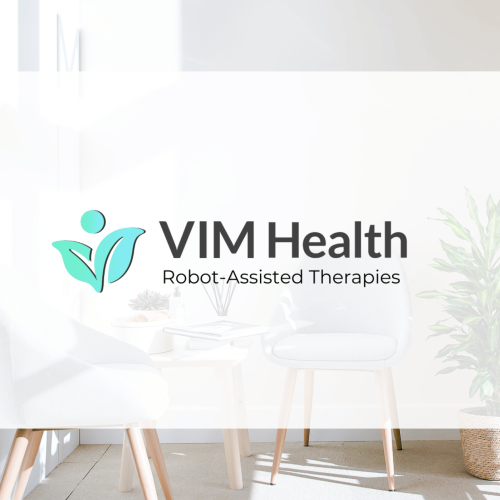For Acquired Brain Injury (ABI) Awareness Week, VIM Health looks at the use of robotics in Neurorehabilitation for ABI’s. A person’s physical and cognitive abilities are often significantly impacted with an ABI, which can then require comprehensive rehabilitation to regain lost functions. Traditional rehabilitation approaches are effective but can be time-consuming and resource-intensive. Thanks to advancements in robotics, innovative solutions now aid neurorehabilitation. In this blog, we will explore how robotics can assist in the neurorehabilitation of people with ABIs, offering them new possibilities for recovery.
Understanding Acquired Brain Injuries (ABIs):
Acquired Brain Injuries result from various incidents such as strokes, traumatic brain injuries (TBI), brain tumours, or infections. These injuries can impair motor functions, coordination, balance, speech, and cognition. Neurorehabilitation aims to help patients regain lost skills, enhance independence, and improve their overall well-being.

Robotics in Neurorehabilitation
Robotic technologies offer promising avenues for the rehabilitation of ABI patients. These advanced systems, such as exoskeletons, robotic limbs, or virtual reality interfaces, can assist patients in various ways.
- Physical Rehabilitation: Robotic exoskeletons like the REX from REX bionics and orthoses support and assist patients in regaining mobility and motor control. These devices can aid walking, balance training, and relearning motor patterns. By providing real-time feedback and customized assistance, robotics can enhance the effectiveness of rehabilitation exercises and reduce the risk of secondary complications.
- Task-Specific Training: Robots can be programmed to simulate specific tasks and activities that ABI patients need to relearn. These tasks range from simple movements like picking up objects to complex activities requiring fine motor skills. Robotic systems provide repetitive practice opportunities with consistent precision, enabling patients to regain muscle control and coordination.
- Sensory-Motor Integration: Sensory feedback plays a crucial role in neurorehabilitation. Some Robotic devices have sensors to detect patient movements and provide real-time feedback, encouraging active participation and muscle activation. This feedback helps you reestablish the connection between the brain and the affected limbs, fostering neuroplasticity and functional recovery.
- Cognitive Rehabilitation: ABIs often lead to cognitive impairments that affect memory, attention, and executive functions. Robotic technologies combined with virtual reality interfaces can create immersive environments for cognitive training. These systems can simulate real-life scenarios and challenges, providing mental stimulation while tracking progress and adjusting difficulty levels accordingly.

Benefits of Robotic Assistance in Neurorehabilitation: The integration of robotics in neurorehabilitation offers several benefits for ABI patients:
- Customization and Personalization: Robotic systems can be tailored to meet your individual needs, allowing personalized rehabilitation programs. The ability to adjust parameters such as assistance levels, range of motion, and difficulty ensures optimal challenges and progress tracking for each patient.
- Intensive and Repetitive Training: Robotic devices such as the LYRA from THERA-Trainer facilitate intensive and repetitive training, which is crucial for neuro recovery. This allows you to engage in more practice sessions without physical fatigue or the need for constant human supervision. The high number of repetitions improves motor learning and skill acquisition.
- Motivation and Engagement: Robotic systems provide interactive and engaging rehabilitation experiences. Gamification elements, virtual reality simulations, and real-time feedback create a motivating environment that encourages you to participate in your recovery journey actively. Increased motivation leads to better adherence to therapy protocols and improved outcomes.
- Remote Monitoring and Tele-rehabilitation: With the advancements in telemedicine, robotic systems enable remote monitoring and telerehabilitation for ABI patients. This capability allows healthcare professionals to assess progress, provide guidance, and adjust treatment plans.
Get in touch
For more information on the equipment we have in our neurorehabilitation centre, or to discuss one of our intensive rehab programs, give us a call on 01273 037400 or send us an enquiry.
